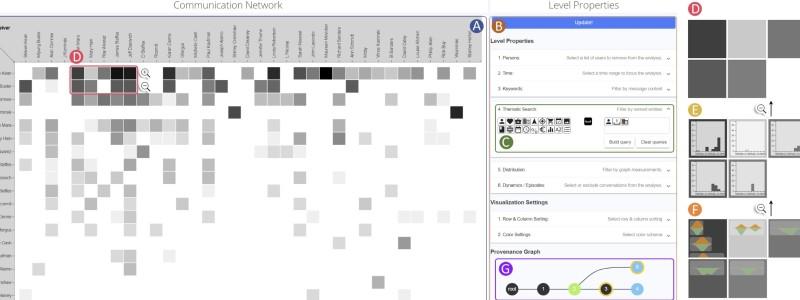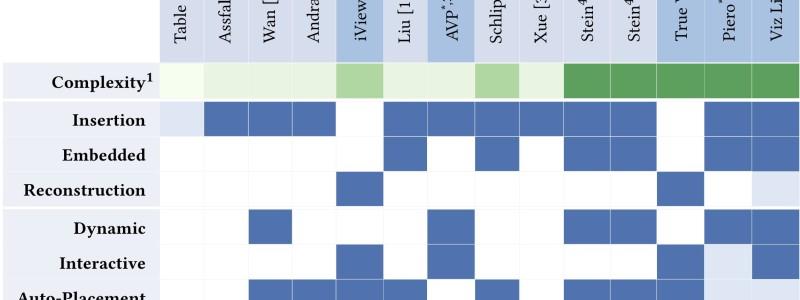
Visual Analytics for Temporal Hypergraph Model Exploration
M. T. Fischer, D. Arya, D. Streeb, D. Seebacher, D. A. Keim, M. Worring
IEEE Transactions on Visualization and Computer Graphics, 2020, DOI:10.1109/TVCG.2020.3030408, 2020Network Visualization Methods Graph Drawings Hypergraph Social Network Time-Series Communication Dynamic Network
Many processes, from gene interaction in biology to computer networks to social media, can be modeled more precisely as temporal hypergraphs than by regular graphs. This is because hypergraphs generalize graphs by extending edges to connect any number of vertices, allowing complex relationships to be described more accurately and predict their behavior over time. However, the interactive exploration and seamless refinement of such hypergraph-based prediction models still pose a major challenge. We contribute Hyper-Matrix, a novel visual analytics technique that addresses this challenge through a tight coupling between machine-learning and interactive visualizations. In particular, the technique incorporates a geometric deep learning model as a blueprint for problem-specific models while integrating visualizations for graph-based and category-based data with a novel combination of interactions for an effective user-driven exploration of hypergraph models. To eliminate demanding context switches and ensure scalability, our matrix-based visualization provides drill-down capabilities across multiple levels of semantic zoom, from an overview of model predictions down to the content. We facilitate a focused analysis of relevant connections and groups based on interactive user-steering for filtering and search tasks, a dynamically modifiable partition hierarchy, various matrix reordering techniques, and interactive model feedback. We evaluate our technique in a case study and through formative evaluation with law enforcement experts using real-world internet forum communication data. The results show that our approach surpasses existing solutions in terms of scalability and applicability, enables the incorporation of domain knowledge, and allows for fast search-space traversal. With the technique, we pave the way for the visual analytics of temporal hypergraphs in a wide variety of domains.
Related Publication







